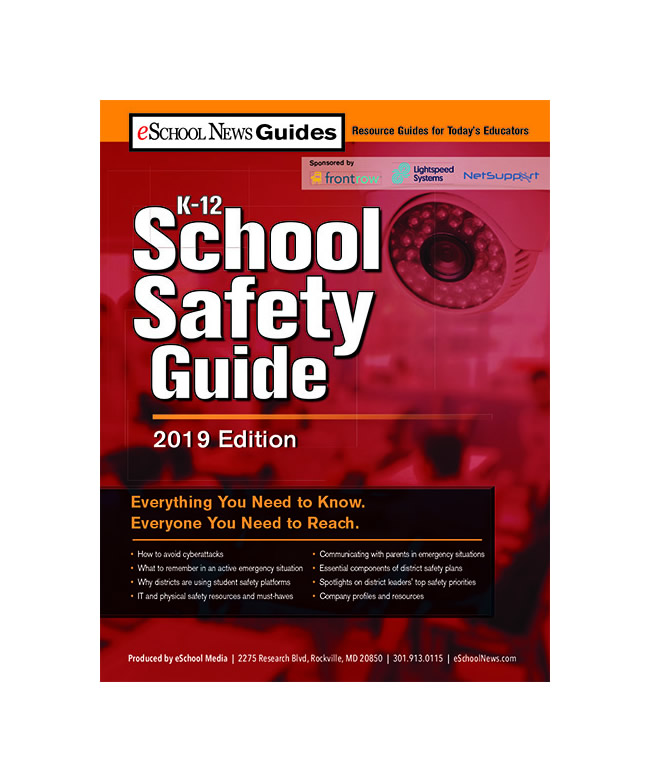School safety is paramount to administrators, educators, parents, and students across the country. Teaching and learning can’t occur when school staff and students feel unsafe in their classrooms and school buildings.
School safety encompasses both physical safety and network security, with the lines often blurring between the two–careful network monitoring can detect threats to students’ physical safety, whether from one student planning an incident against one or many other students, or a student contemplating self-harm.
Related content: Student safety management is more important than ever
Here, we’ve compiled a list of resources to investigate as you pursue tools and resources for physical and network security.
1. NetSupport’s NetSupport School is a complete classroom management solution offers assessment, monitoring, collaboration, and control features. NetSupport DNA offers school IT asset management with internet safety to help keep school networks and students protected.
2. FrontRow’s ezRoom Trio is an all-in-one classroom media solution with premium sound quality and scalability. Pre-installed options handle HDMI switching, voice reinforcement, voice commands, integration with school bells and paging system, emergency alert buttons, automation, projector control and management, and much more.
3. Lightspeed Systems’ Relay Platform offers cloud-based filtering, device management with app controls, monitoring to keep teachers focused on students and not screens, protection with the ability to flag inappropriate content such as cyberbullying or self-harm, and analytics capabilities.
Related Content:
eSchool News School Safety Guide
The eSchool News School Safety Guide is here! It features strategies to help you create and maintain safe and secure learning environments, both physical and online. A new eSchool News Guide will launch each month–don’t miss a single one!
4. Sandy Hook Promise trains students and adults to know the signs of gun violence so that no other parent experiences the senseless, horrific loss of their child. The organization’s programs focus on teaching youth to minimize social isolation by being more inclusive, and to learn and look for the signs that someone is thinking of hurting themselves or others and to speak up. The group also has an anonymous reporting system.
5. AASA, The School Superintendents Association, has formed a new partnership with Armor At Hand, a company that manufacturers Smart Shields, which are capable of instantly protecting users from handguns and high-powered rifles with an optional internet connection, making them smart. The Shields serve as a first layer of protection in the event of an intrusion and serve as an alarm to alert those connected to the system a potential threat is occurring. The Shields hide discreetly in plain sight yet provide immediate protection at first encounter. Once one of the shields is moved, all the shields in the area are alerted and will light up and buzz while autonomously sending an alert to authorities of a potential threat.
6. The U.S. Department of Education announced $71.6 million in new funding to enhance safety in schools and improve student access to mental health resources. The U.S. Department of Education made the awards under four grant programs, which support recommendations identified in the final report issued by the Federal Commission on School Safety.
7. Impero Software, a specialist provider of student safety and device monitoring and management solutions, today announced the launch of its EdAware app to help school staff quickly record and report concerns about student safety – no matter where or when these concerns arise. This includes concerns about bullying, self-harm, suicide and more. The app is available to download on both Android and iOS devices. The EdAware app is an extension of Impero’s EdAware software which simplifies the recording and management of student safety concerns, from depressive episodes to risky online behavior, to help identify potential safety risks.
8. RealNetworks, Inc. has made SAFR for K-12, an AI and machine learning-based facial recognition solution, free for K-12 schools. SAFR works with existing IP cameras and readily-available hardware to match faces in real-time. Schools can stay focused and better analyze potential threats such as expelled students, and those who pose a threat from within and outside the school.
9. CoSN offers cybersecurity resources to help technology leaders and policymakers protect their networks and information security, analyze current status, and also validate what they are doing well. The tools and resources provide insight into how risk can be further reduced in ways that help tech leaders contribute to their schools’ primary goals of teaching and learning.
10. The K-12 Cybersecurity Resource Center offers a host of tools, including The K-12 Cyber Incident Map is a visualization of cybersecurity-related incidents reported about U.S. K-12 public schools and districts from 2016 to the present. Other resources include literature covering cybersecurity strategies, plus a “year in review” summarizing cybersecurity incidents and offering tips for the year ahead.
- New guidance helps ID students ready for Algebra I - May 14, 2024
- Friday 5: Blended learning - May 10, 2024
- Cybersecurity is top priority for K-12 edtech leaders - May 8, 2024


